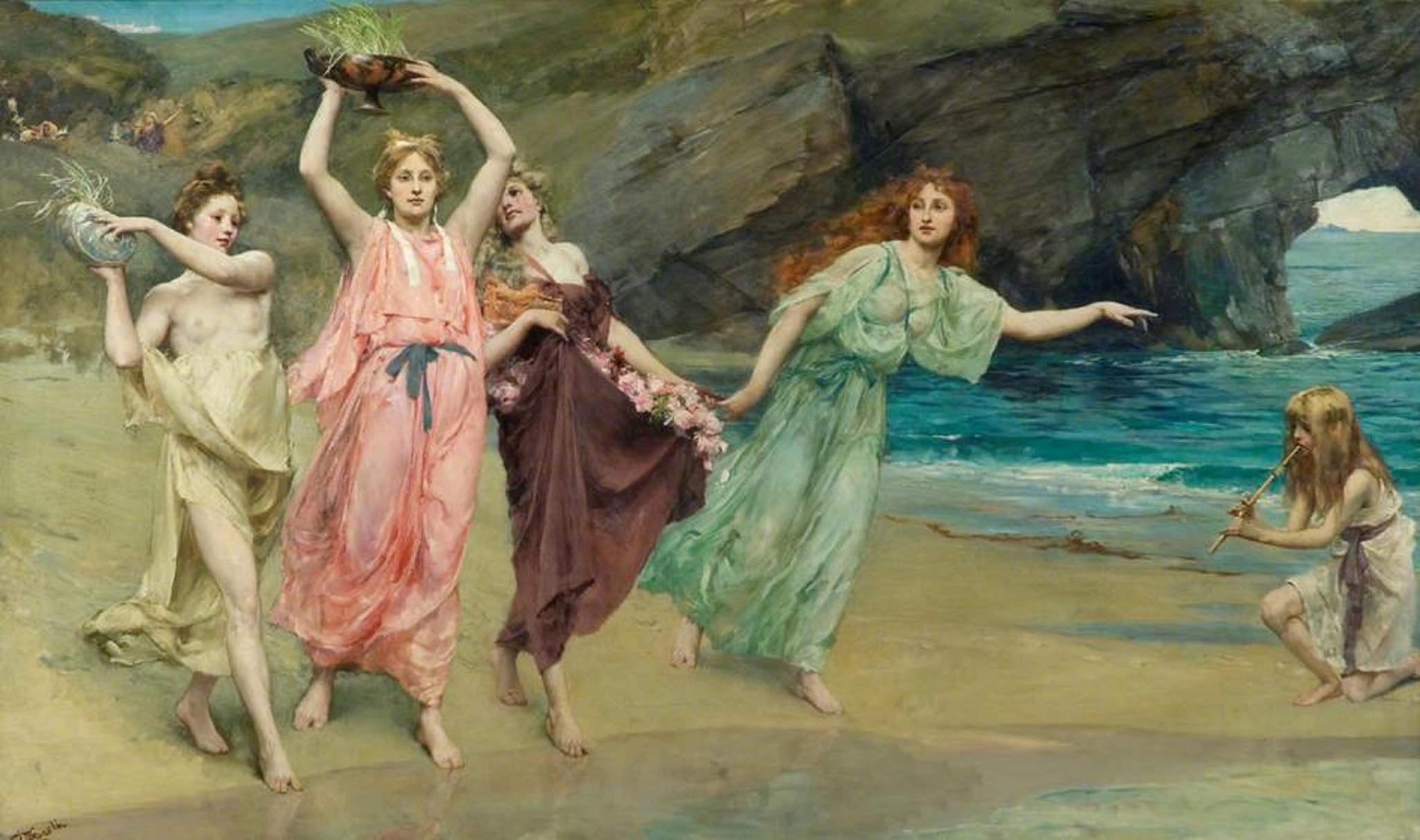Re: "Yesseus Mazareus Yessedekeus"MrMacSon wrote: ↑Fri May 13, 2022 2:43 pmYet Zostrianos has many Christian features eg. baptisms;* early Christian perceptions of Platonic daimones as demons; a reference to a being who 'suffers unsufferingly', a common way for Christians at some point in time to have referred to Jesus; and there's a coded reference to Jesus with the double mention of a figure called Yessus Mazareus Yessedekeus, a mystical name which apparently can be translated as 'Jesus of Nazareth the Just One.'
I am curious how many serious scholars accept this: that Y-M-Y is a) one character and b) the person Jesus Christ. This conclusion is treated very hypothetically in almost every citation I've just read (not a rigorous sample) in the three (3) Sethian works.
1) Apocalypse of Adam .............................................................................. Date c.25? -125 AD
Sethians outside of 'Egypt' (in Syria) would fit Philo's Therapeutae 'who were in all countries' and Josephus speaks of the known and ancient cult more broadly than if it were merely an Egyptian phenomenon. If the core-material of Apocalypse of Adam is truly devoid of Jesus-Xian elements and from someplace w/ a Jewish Baptist tradition, then a date like c.45-65 AD in the Sethrum is not an impossible origin.
"Micheu and Michar and Mnesinous" are three named ex- or Bad Sethians; conversely, there are three named 'Good Sethians' the "imperishable illuminators" (who are of The Living Water) in the plural: Yesseus, Mazareus, Yessedekeus. If not angels, I would read these as three (3) as the good teachers, following a severe (recent?) schism.
"The twelfth kingdom says of him that {Seth] came from two illuminators. He was nourished there. He received glory and power. And thus he came to the Water." Perhaps "Yesseus, Mazareus, Yessedekeus" which constitute the Living Water are two predecessors plus Seth (w/ a new name)? Random musings on the names: Ἰεσσαιος is Jesse; is Μάζαρος an Iranic Median name? Yessedekeus = Ἰησσαισηδηκος; Yishai-zedek 'I-Am-Possessed-of-Righteousness'? (To me, this vaguely suggests or echoes the theme of Genesis 14:18, 'King' Melchizedek and the bread offering.)
1) Ἰεσσαιος is 'The Gift' (Kingship?) ................................................ (Father; Power)
2) Ἰησσαισηδηκος is 'I-Am-Possessed-of-Righteousness' ......................... (Son; Glory)
3) Μάζαρος ... ? (Seth become smthg else: the Barley-Cake Sacrifice??) ..... (Bloodless Offering; Nourished/Fulfilled)
4) -- Initiated --
To read more into 'the Angels' names', by my own (hermetic/gnostic) interpretation I perceive 'Four Steps' at each stage (their appearance at this penultimate stage; they are named at the end) : 1) the Gift is Bestowed, 2) you are Glorified 3) you become/make a Sacrifice of Self, and 4) you are immersed/initiated i.e. join the Holy Order (i.e. Heavenly/Eternal Living Water) -- this repeats, 13x. I would further hypothecate this simple was the original 'Four Step' paradigm from an older period. fwiw, I've pointed out other examples of the 'Four Step' Program, previously.
(This is a fairly hardcore Jewish Apocalyptic; it lacks more pronounced mid-2nd C. AD 'Classical Gnostic' features, therefore it is older.)
2) Holy Book of the Great Invisible Spirit/'Coptic Gospel of the Egyptians' ................... Date c.125-175 AD
Holy Book of the Great Invisible Spirit (Coptic Gospel of the Egyptians) is Egyptian. From wiki (I am lazy), "it is far more likely that the name is based on connections made between Seth of the Old Testament and Set, the ancient Egyptian god of violence, chaos, and storms. This Gospel differs from the Gospel of Philip and the Gospel of Truth in that it is not from a Valentinian perspective and instead focuses on a viewpoint rooted in Sethianism." The Jesus bits may be late addition, re-validation upon an older cult's myth (text); Late Sethian, but w/ an underlying cult record that was Christianized in the 3rd C.? The ONE (1) "attendant called Yesseus Mazareus Yessedekeus" looks like a conflation (to me.) But by adding Jesus' brother, this account seems to borrow an alternate version with the three Baddies "Micheus and Michar and Mnesinous" and some new-alternative details (compiled eclectica) which may be late addition.
3) Zostrianos ........................................................................................ Date c.175? -225 AD
The conflated "immortal spirit" again (not 3 Blessed Ones) and the three Baddies are also not excommunicated, but their names are different: Gamaliel and Strempsouchos, Akramas and Loel, and Mnesinous. (To me, 'new & more complex' shows this work is the latest.)
Among these three exemplars, ApAdam seems the oldest. The other two versions conflate the three blessed teachers into one (the indivisible Living Water), which some (few?) scholars further insist must be a three-named Jesus Christ (I'm not seeing that, sorry). Weird, incoherent extra material always looks 'Later' to me; that is just my bias. I hope someone's AI will soon provide better insights to dating these three texts.
I still wonder if the varied heretics' names suggest where they came from; the (older) blessed ones, ditto.
Side-note on the Trismegistos Text:
Unfortunately, TM 26562, p.amst.1.36 isn't relevant to Sethians. Syrion is a leader of some village in the Setheroite nome of Egypt (from a village called Τανουπις = Tanoupis in the Syriad).
